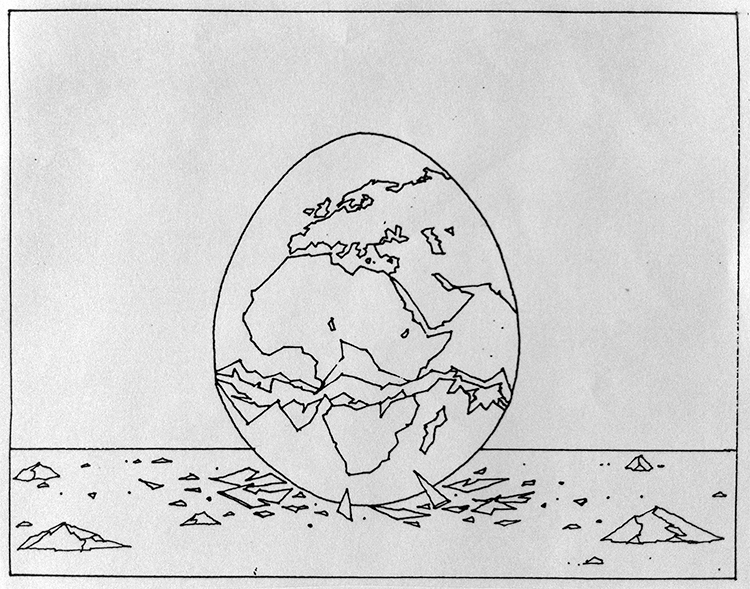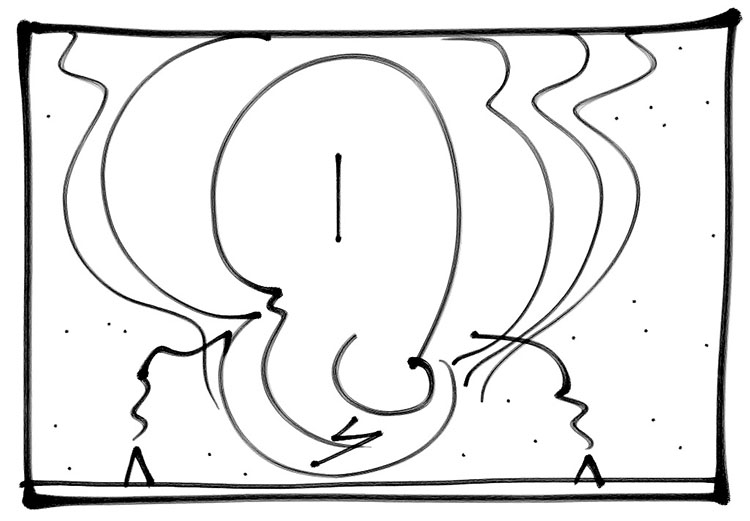Let Why You Draw Determine How You Draw

If I’m trying to make a drawing that looks good or one that is good to look at then the hour I spent making this is well spent but if drawing requires that much time I won’t draw often.
If I’m drawing to record ideas, this is a much more efficient way to draw and so I’ll draw more.

“Make things as simple as possible – but not simpler.” – Albert Einstein
In their wonderful book Art & Fear Ted Orland and David Bayles share a story.
A daughter asks her father, “What did you do today?”
“I taught my students how to draw,’ he responded matter of factly.
She gasped in amazement, “When did they forget?”
I find that when I ask people if they can draw the number of affirmative responses is directly related to age. The younger you are the more you know you can draw. So what happens when we grow up? We are taught a terribly limiting understanding of the many things drawings can be and do.
With a unidimensional vision of what drawing is, we are trapped by someone else’s limited vision of perfection that is further complicated by comparison to others.
We can all draw. Note that I didn’t say we can or should all draw like Michaelangelo. It takes more time to develop the skills necessary to draw in some ways than others. And you probably draw a little differently than your friends who also think they can’t draw. But if you can read this (possibly even if you can’t), then chances are you already know more than one way to draw.
Drawing is many different things to many different people – and it can do many things for you. For Thomas Edison drawing was a way to visualize what didn’t exist – yet. He handed his team a very simple sketch to help them invent the phonograph. (As a draftsman he was no Leonardo but his limited drawing skills helped him be an even better inventor.) Words weren’t enough and he needed a way to visualize what they had never seen before but soon would in part because he helped his team visualize it with a drawing.
So once we understand that even doodles are just one of many kinds of drawings, we might start to reframe what makes a drawing good based on the purpose we intend it to serve. If all you’re looking for is a way to find and capture ideas, then the time it takes to render them realistically is wasted. (And who wants to waste time?) Moreover, for some purposes, the extra detail added may be distracting or, worse, confusing. (If I ask you where the bathroom is, and you start spouting extended passages of flowery verse, one or both of us might get wet.)
The kind of drawing I want to encourage you to practice as part of your creative toolkit is not about making good-looking drawings; it’s about making useful drawings. Drawing can be useful in many, many ways.
1. Imagine The Possibilities
2. Capture The Idea In What’s Picture Imperfect
3. Identify Possible Variations
4. Structure Stories With Storyboards

